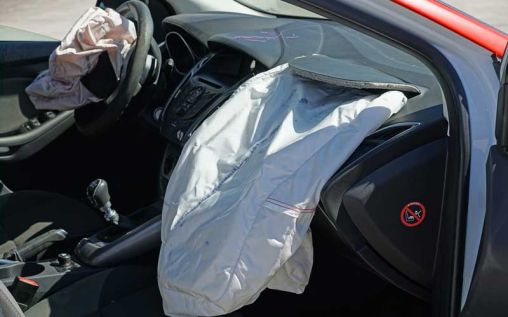4 Incidents Covered by Collision Insurance
Posted by admin at 20 June 2020, at 11 : 30 AM

Unlike other coverage options for auto insurance, collision insurance is not required by law in the majority of U.S. states. Regardless, many drivers find the coverage a worthwhile investment.
What is collision insurance? It’s one of many individually priced forms of coverage that people add to their car insurance policies. While other coverage types account for the damage a driver causes to another person or their property, collision insurance covers the cost of repairs or replacement for the policyholder’s vehicle.
Considering Collision Insurance
Since the law doesn’t require collision insurance, many car owners internally debate whether or not to add it to their plan. If you find yourself in this boat, you may want to consider the most common events that collision insurance would cover:
⦁ 1. Colliding with Another Vehicle– Regardless of who’s at fault for the accident, collision coverage will help pay for damages to the policyholder’s car.
⦁ 2. Hitting an Inanimate Object– Should you hit an object, such as a mailbox, curb, post, sign, pole, tree, or fence, collision insurance pays for your car’s repair.
⦁ 3. Getting Into an Accident Without Another Driver Involved– If a policyholder’s car flips or rolls due to weather or another circumstance that doesn’t involve another driver, collision insurance applies.
⦁ 4. Being the Victim of a Hit-and-run Accident (depending on where you live)– In some states, collision insurance can be used to pay for damages to your vehicle should you experience a hit-and-run accident. This includes accidents that happen on the road, or while the car is parked.
Understanding Collision Coverage Deductibles
A deductible is the amount of money a policyholder will need to pay out of pocket before their insurance coverage will take effect. Typically, deductibles range between $100 and $1000. In general, people follow one of two schools of thought when it comes to insurance deductibles:
⦁ Higher Deductible, Lower Premium– This option will save you money if you don’t get into an accident during your policy term, because you’ll never pay the deductible and will a lower premium each month. However, if you do get into an accident, you’ll have to pay more out of pocket.
⦁ Lower Deductible, Higher Premium– This option will likely save you money if you get into one or more accidents during your policy term.
Coming to Conclusions
With a better understanding of collision insurance, you can make a more informed decision about whether or not to include the coverage, and if so, what deductible to choose. Ultimately, it comes down to your own comfort level and risk assessment. Keep in mind that factors like your age, gender, location, car value, and driving record will also affect how much you pay for auto insurance.
Also, you’ll have to take into consideration the other forms of coverage you have to purchase by law, and those that are also optional. These coverage forms include:
⦁ Bodily injury liability
⦁ Property damage liability
⦁ Comprehensive coverage
⦁ Personal injury protection (PIP)
⦁ Medical payments coverage
⦁ Uninsured and underinsured motorist coverage
Choosing an Insurance Provider
Once you’ve determined which coverage forms you’ll need, all that’s left is to find the right car insurance provider. To secure the best rates, do your due diligence when it comes to researching your options and requesting quotes. And, don’t forget to ask about the insurance discounts you may qualify for. It may feel like a tedious process, but should you ever get into an accident down the road, you’ll be glad you put in the time and effort to find the right policy.
